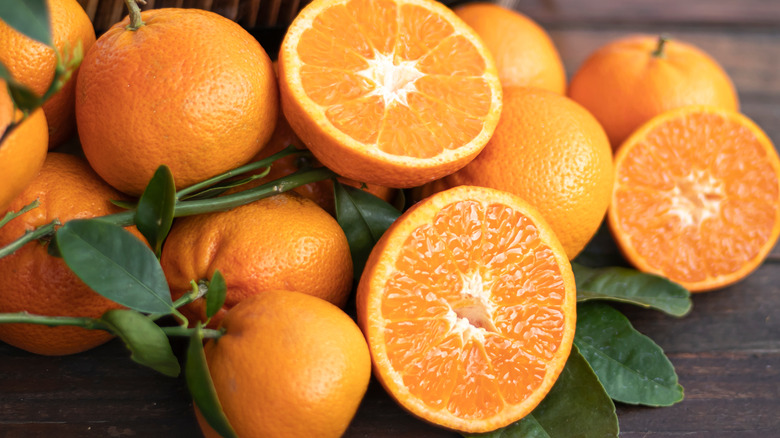Declaring Official State Foods Is More Political Than You Think
Wherever you are in the United States, chances are good that at some point, you'll catch wind of — and maybe even get a taste of — the state's ceremonial grub.
For instance, Wisconsin is known for its dairy milk, Kringle, and cranberries. Head to North Carolina to get a taste of strawberries, blueberries, and sweet potatoes. California has a handful of state nuts: walnuts, almonds, pecans, and pistachios, per The Takeout. Florida is widely recognized for its abundant orange farms, which provide the majority of the world's sunny citrus fruits and their tangy juice. Massachusetts is the birthplace of chocolate chip cookies. The list goes on.
State foods and beverages, along with other state symbols such as birds, flowers, and insects, are representative of each territory's unique culture, climate, and terrain. And perhaps surprising to some, they are decided upon through the state legislature, rather than mere popular opinion. But who knew that the process of proclaiming these emblems was so bureaucratic and time-consuming?
Identifying official state foods is a tedious process
Selecting the cuisines and crops to represent specific places may seem mundane to the average American. However, these decisions are often taken more seriously by lawmakers than commonfolk may realize.
Smithsonian explains that the venture is typically initiated by students who are learning about how bills are passed — or vetoed. For example, in the late '80s, a group of second-graders from Merrill, Wisconsin traveled to Madison with the hopes of making the cranberry muffin become the state muffin. Alas, the bill did not pass. A fourth-grade class in North Carolina, however, successfully got Moravian cookies to be labeled as the Tar Heel State's official dessert.
The convention of declaring state symbols was set in motion at the 1893 Chicago World's Fair, where women's groups decorated their booths in flowers grown in their home states, according to History. Many fairgoers, as it turns out, loved the concept and eagerly presented it to their government leaders after the months-long festival. The trend eventually expanded to embrace even more official state symbols, including gemstones, minerals, plants, and of course, foods. But it wasn't until 1964, when a New Mexico high school student, Helen Loera, suggested the chile pepper be the state vegetable, that the tasty tradition really took off, per Smithsonian.

